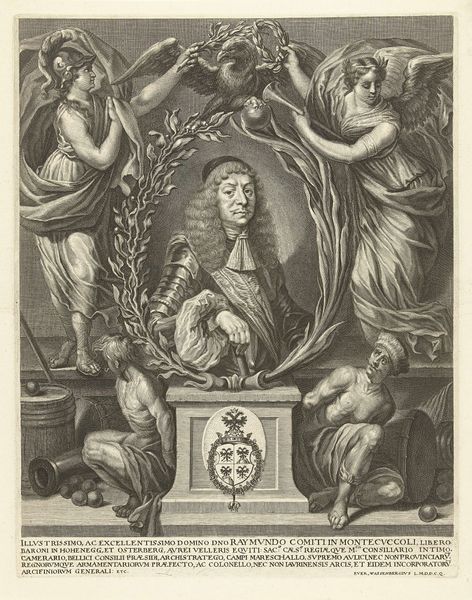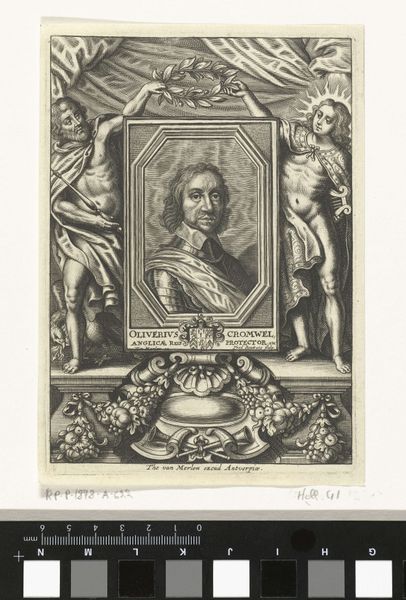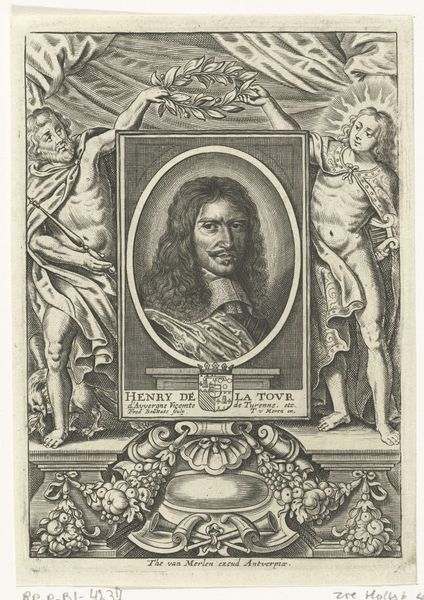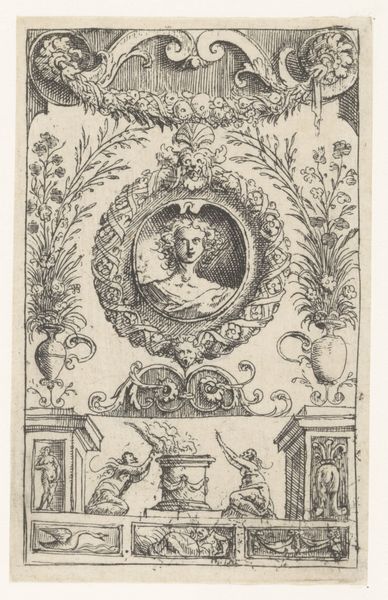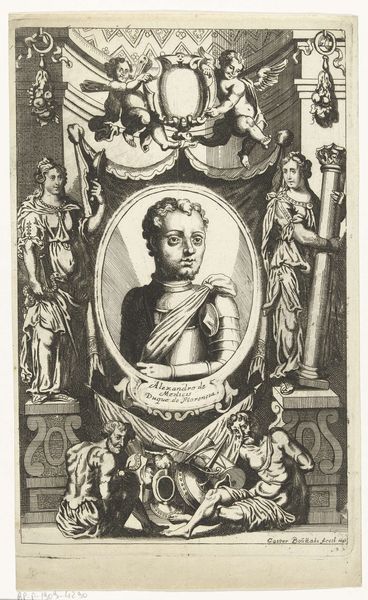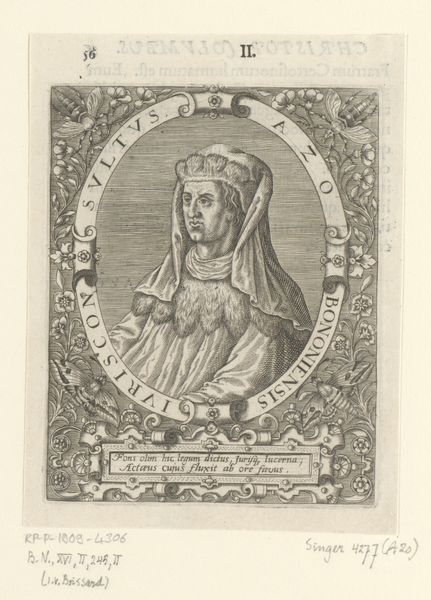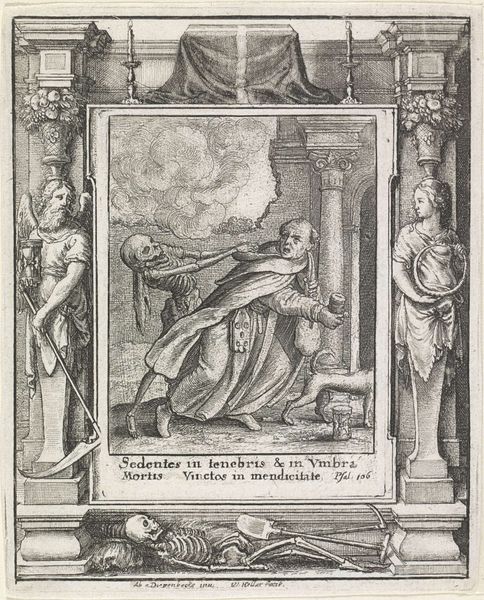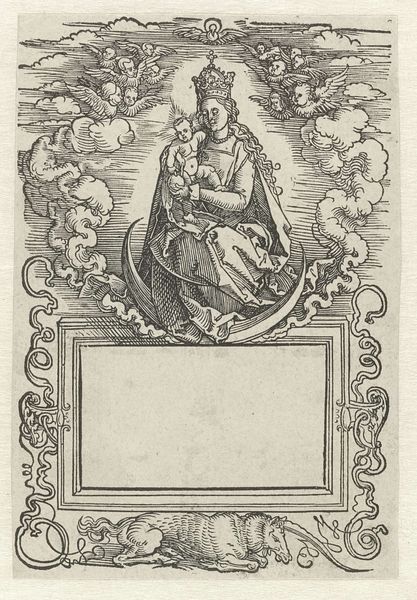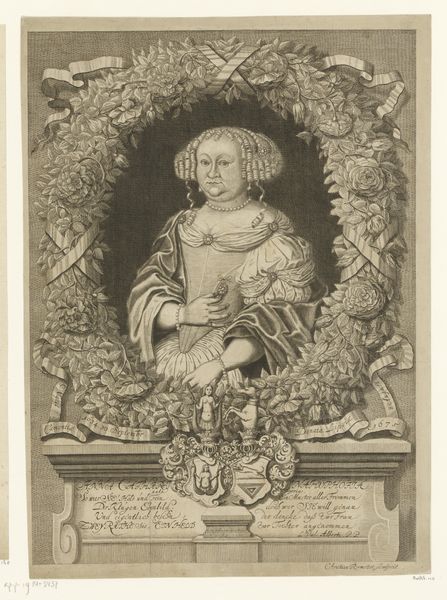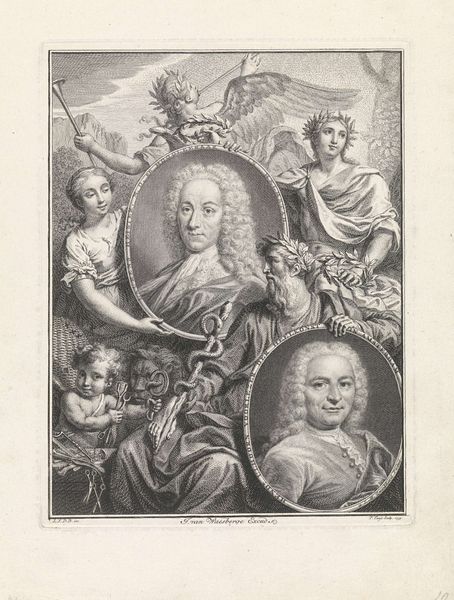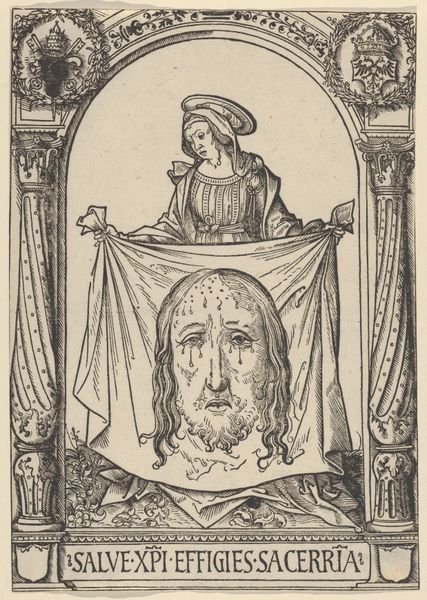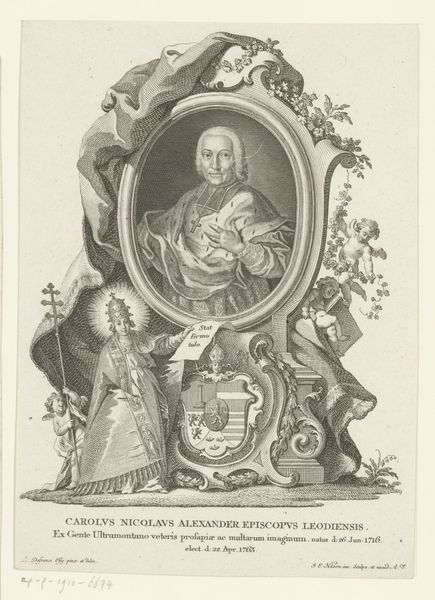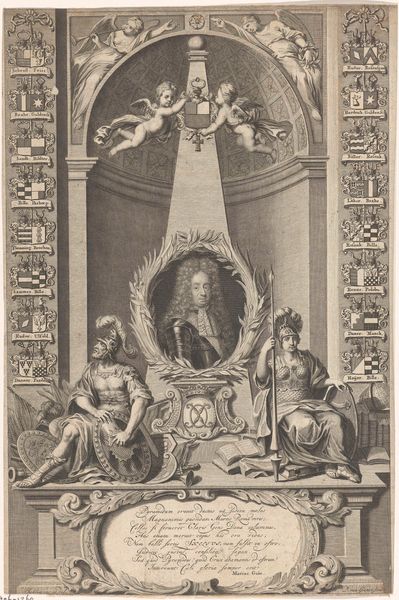
Portret van koningin-gemalin Sophia Amalia van Noorwegen en Denemarken 1643 - 1676
0:00
0:00
print, engraving
#
portrait
#
baroque
# print
#
old engraving style
#
caricature
#
figuration
#
history-painting
#
engraving
Dimensions: height 165 mm, width 116 mm, height 88 mm, width 56 mm
Copyright: Rijks Museum: Open Domain
Curator: This engraving presents a portrait of Queen Consort Sophia Amalia of Norway and Denmark, likely made sometime between 1643 and 1676. It's currently held here at the Rijksmuseum. Editor: Well, my first impression? A bit… severe, perhaps? I mean, those tightly curled ringlets framing her face, the way the engraver has captured a certain… firmness in her expression. Is that an inherent trait, or an intentional projection of power? Curator: It’s fascinating to consider how portraits like these were carefully constructed to convey very specific messages about status and authority. Frederik Bouttats, the artist, worked within a well-established visual language. Look at the figures flanking the portrait. Editor: Right, a sort of classical god figure on the left and something… angelic on the right. One's holding what looks like a staff and the other a laurel wreath. It’s all a bit…stagey, isn’t it? Almost theatrical. Curator: Absolutely. Baroque portraiture, especially engravings destined for wide distribution, relied heavily on symbolism to reinforce the subject’s virtues and legitimacy. Consider, too, the role engravings played in disseminating images of royalty across different social strata. Editor: It's intriguing to see how even in a relatively small print like this, the artist uses architectural elements, garlands, even her rather magnificent jewelry, to create a sense of grandeur and importance. But that expression still intrigues me, perhaps sadness, she certainly exudes gravitas. Was she known for anything specific that might have influenced her portrayal? Curator: Sophia Amalia's reign was marked by a complex political landscape. Denmark endured multiple wars. The weight of those historical forces could easily seep into a portrait like this, consciously or unconsciously. Editor: So, it's less a literal likeness and more a crafted representation of queenship during a tempestuous era, filtered through both the artist’s and the royal court’s agendas? Curator: Precisely. What appears to be a simple portrait is in fact a highly charged political and cultural statement. Editor: Makes you wonder what a modern Instagram filter would do to it. Anyway, I look at this very differently now. It's a potent reminder of how art always operates within the context of power. Curator: Indeed. It's a fascinating glimpse into the intersection of art, power, and personal representation.
Comments
No comments
Be the first to comment and join the conversation on the ultimate creative platform.
